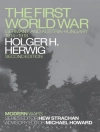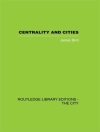Analysis of hundreds of art works from the period provides insights into forgotten landscapes and hidden geographies.
After the Napoleonic wars many wealthy British women and men settled along the coast in Liguria and travelled in Piedmont and Valle d’Aosta in search of warmth and health. They established English-speaking colonies of retired clerics, colonial officials, aristocrats and industrialists at places such as Alassio, Bordighera, Sanremo and Portofino. Many were keen artists.
This book assesses hundreds of topographical drawings, paintings and photographs of north-west Italy produced by these British visitors and residents in the nineteenth and early twentieth century. Through the identification and analysis of these works, scattered today in private and public collections in Italy and Britain, it provides insights into the way Italian landscapes were understood and appreciated. Considered in conjunction with historical photography, maps, archives and fieldwork, they deepen our knowledge of past land management traditions and recover how the contemporary landscape looked. The artists are placed in their intellectual and geographical contexts; and interconnections between British and Italian artists and between topographical art and photography are explored. Different chapters assess the main subjects depicted, including mountains, seascapes, rivers, agriculture, trees and woodland, castles, churches, villages, industries and landscapes of luxury.
Jadual kandungan
Introduction
Identifying views
Landscape history
Environmental change
Chapter 1: Landscape Artists in North West Italy
Women artists
Amateur male artists
Professional male artists
Ruskin and nature drawing
Late nineteenth-century amateurs
From
Vedutismo to
Realismo
The
Scuola Grigia and
Scuola di Rivara
Chapter 2: Art and Landscape Photography
Fox Talbot and the idea of natural pictures
Fox Talbot and William Strangways
The spread of photography in Italy
Landscape photography in Liguria
Chapter 3: From the Alps to the Mediterranean
Depicting the Valle d’Aosta
Tourists climbing Monviso
The Maritime Alps and Tenda Pass
Painting and plant collecting
Transhumance landscapes
Chapter 4: ‘Coasting prospects’ and Marine Painting
Views of the coast from the sea
Working on the beach
Ventimiglia: coastal transformation
Shipbuilding at Varazze
Chapter 5: Villages and Castles: ‘exquisite picturesqueness’
Archaeological remains
Castles and forts
Churches and religious landscapes
Creverina: an obscure inland village
Rock villages of the Riviera
Chapter 6: Productive Landscapes
Horticulture
Haymaking
Viticulture
Olive groves and oil
Terraces as productive sites
Productive pines
Chestnut cultivation
Chapter 7: River Landscapes
Spectacular bridges
Impetuous torrents
Mills, papermills and ironworks
Chapter 8: Landscapes of Modernity
Coastal roads and mountain passes
Railways, the telegraph and trams
Industrial landscapes
Chapter 9: Luxurious Landscapes
In search of health on the coast
Cool hills and hydrotheraphy
‘In lands of palm’
Luxurious gardens
Conclusion
Mengenai Pengarang
ROSS BALZARETTI is Professor of Italian History at the University of Nottingham.












